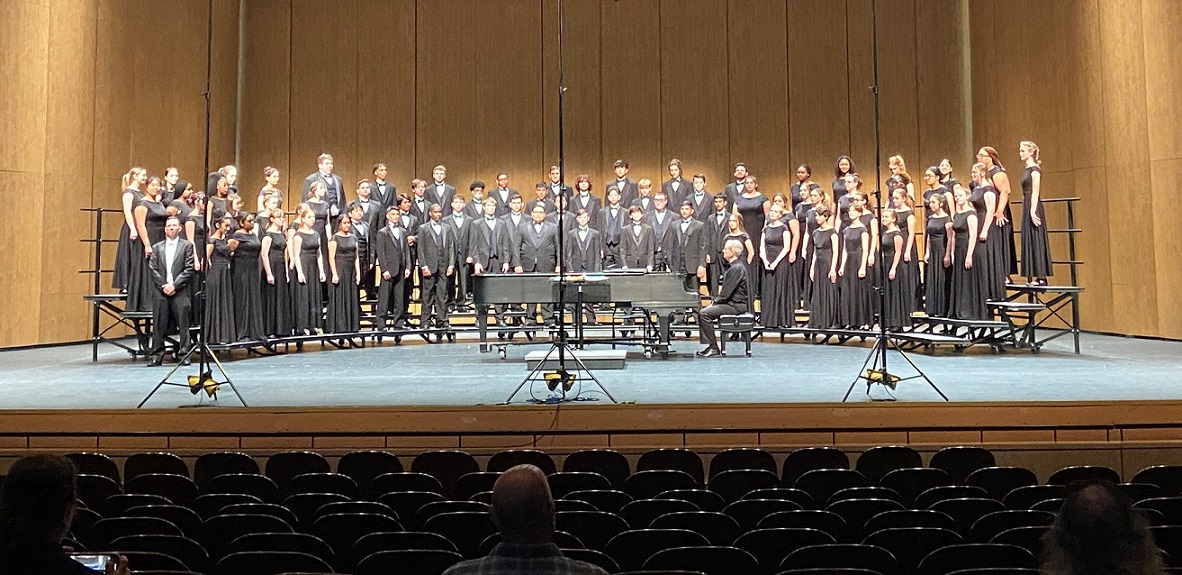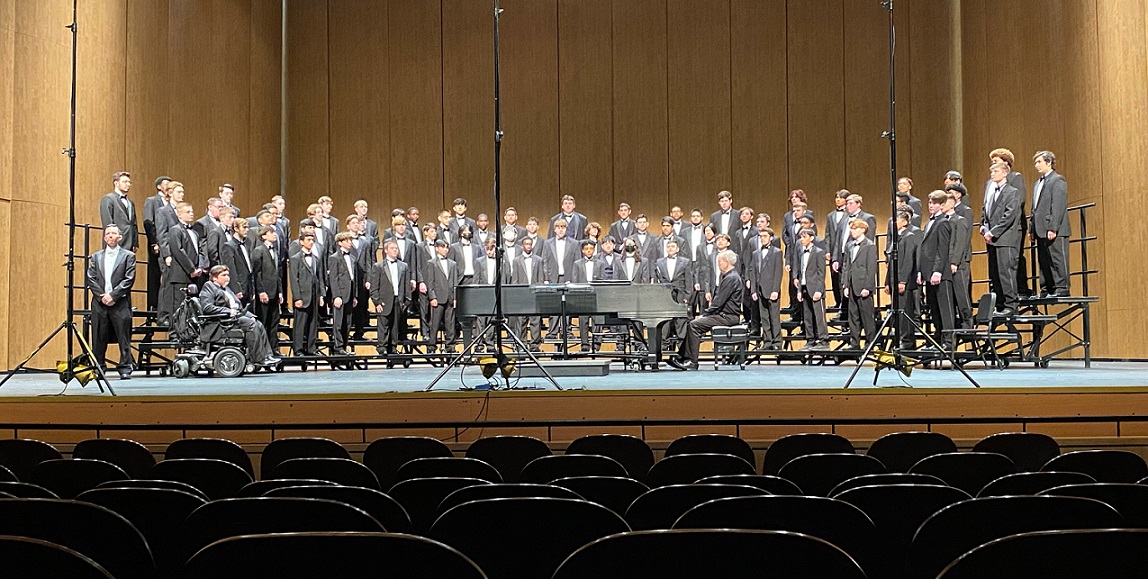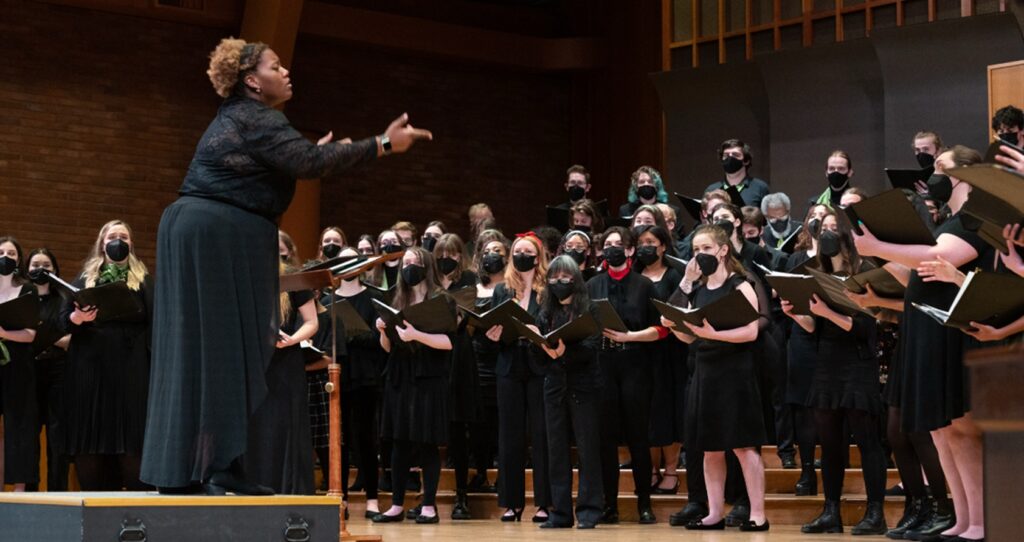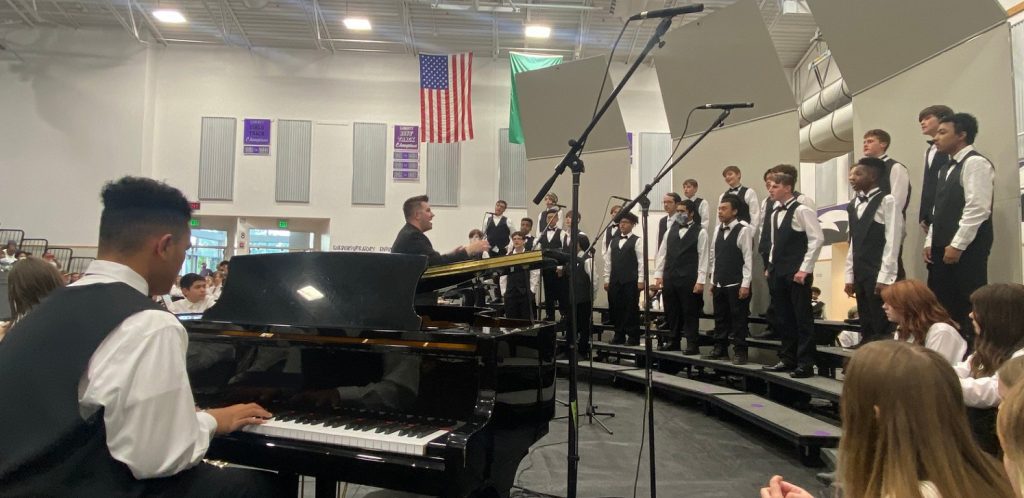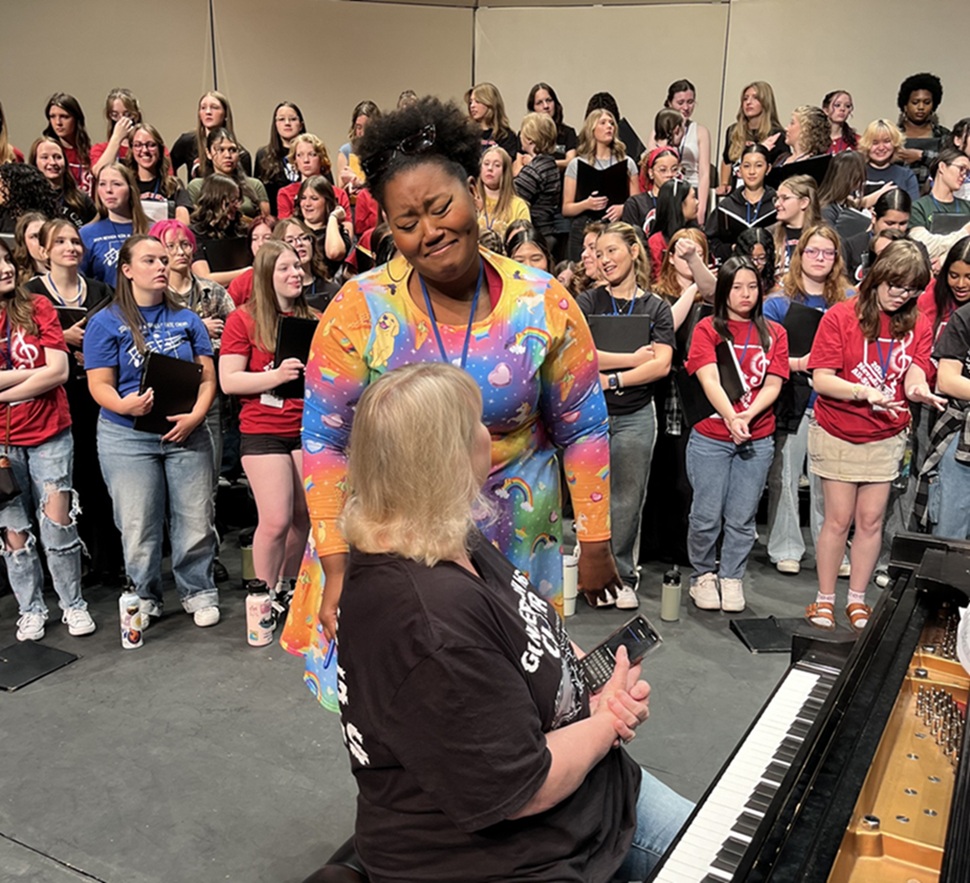Tagged Under:
Case Study: 8 Keys to Successfully Build Culture through Strategic Planning
Incorporate these key elements in your plan to make your music program bigger, better and thriving.
Hard work is an essential component of a thriving program, but your plan for how you strategically achieve it can make all the difference. As a doctoral student, I took some courses in human resource management, educational leadership, and policy studies and learned about the importance of a strategic plan.
I decided to craft and implement a strategic plan when I stepped into my current role as the director of choral activities at Wylie East High School in Texas. I was amazed at how easily I incorporated the strategic plan into my program, and I truly believe that this is a fabulous model for music educators to shape their programs.
My model focuses on eight key steps for success, but there are many ways to approach building a program. This is simply what has worked for me, my staff and my students. I share it with you in hopes that some or all of this can inspire reflection and action for you, your students and your program.
Key #1: Be Led from Within to Lead Out — Define, Refine and Articulate Your Mission
The leader must be led from within in order to effectively lead others. Educators should ask themselves: “Why do I do what I do?”
What propels you to inspire others, gives you the fuel during challenging times and keeps you coming back to school each day? Strive to define your philosophy of music education, revisit it often (refining as needed), and articulate it into a mission for your program that serves as the foundation for a logical, grounded and sequential plan.
In the simplest of terms, my philosophy is to inspire all students through a comprehensive choral music program that teaches them to not just be outstanding musicians, but to develop community among one another, all while serving the community in which they live and those with whom they come in contact. This articulated in a mission statement reads:
The Wylie East High School Choral Department is an organization that strives to deliver a choral music education to all students through outstanding musicality, career and community development, and service to the school and community.
Key #2: Build Your Army — Strength, Creativity and Inspiration through Numbers
While building a dynamic program begins with you, your ideas and your mission, one person cannot do it all. If you’re a proud Type A personality like me, it’s easy to shoulder all of the responsibility, take the blame when things come up short and enjoy the fruits of your labor when things go well. However, there is an unintended consequence of this do-it-yourself tactic — you will burn out.
Trust me, I learned this lesson the hard way. I used my youthful exuberance and energy to teach and grow a middle school choir program, and while success was plentiful, it became unsustainable and I was exhausted. I was forced into a different approach, which I now see is critical to long-term success: strength in numbers.
Before you dive into the strategic planning process, involve your feeder school directors, student leadership teams, parent boosters and volunteers, and when needed, your campus administration. Ask the difficult questions. What is going well? What needs refining? What goals and visions do they have for the program?
Key #3: Dream Big — Needs Assessments through Optimistic Reality
One of my favorite TV personalities is Dr. Phil with his no-nonsense approach of “getting real.” My students know this about me, and they know that I am unafraid to tell them when we have work to do. I say this because this step can get ugly because it exposes things about your program that are less than desirable. However, approaching this step through optimistic reality can help you frame your thinking away from pure adjudication to that of a dreamer.
Draw two columns in a notebook, and look at your program as a whole. Determine what you like about your program and then ask yourself: “If we could only…”. Based on your responses, create a list of ideal needs for your program and students. Dream big! Some examples that I have used, organized by difficulty, include:
-
- Create a new choir logo and branding proposal for marketing purposes
- Expand the vocal solo collection library
- Inventory housed equipment for condition, repair or replacement + articulation of needs through capital outlay
- Maximize existing classroom, office, storage and library space to accommodate large classes
- Assess budget spending and fundraising to increase campus activity fund, and involve booster clubs to fund offerings for students
- Upgrade and purchase uniforms for all choirs
- Imagine, plan, design and articulate needs for a new facility
Key #4: Think of Big Ideas — Set Overarching Strategic Goals.
 This step takes time to complete. I like using the Goldilocks approach to get it just right. Think of three BIG ideas that can fuel your plan. One way of thinking about this is to go back to your mission. Generally, your mission can be pared down to three or four big ideas. Use those as the backbone for your overarching goals. For me, they are creating great musicians, developing a community within the program and its ensembles, and to serve others through what we do. Written as strategic goals, they read:
This step takes time to complete. I like using the Goldilocks approach to get it just right. Think of three BIG ideas that can fuel your plan. One way of thinking about this is to go back to your mission. Generally, your mission can be pared down to three or four big ideas. Use those as the backbone for your overarching goals. For me, they are creating great musicians, developing a community within the program and its ensembles, and to serve others through what we do. Written as strategic goals, they read:
- Strategic Goal 1: Outstanding Musicality — Develop exemplary musical skills at all choral levels, including tone, timbre, dynamics, etc. in both the individual and choral group settings. Demonstrate through performance(s) and participation/success in competitions.
- Strategic Goal 2: Career and Community Development — Establish an inclusive environment for all Wylie East High School students through an aligned program of expectations and traditions that is both sustainable and collaborative.
- Strategic Goal 3: Service to the School and Community — Enhance presence within the school and community through active participation, travel and the “Wylie Way” district character-building connections.
Key #5: Set Different Levels of Goals — Strategic Action through Macro- and Micro-Level Goals.
Now, it’s time to get the hamster in the cage, introduce it to the wheel and let it run! The often-used phrase by Stephen Covey, “begin with the end in mind,” is so appropriate for this “exercise class.”
What does a musician in your program look like after four years? At the end of the year? What do you want your ensemble to sound like? Creating these macro-level (4- and 1-year) goals along with the micro-level goals of how you will achieve them through concerts and lessons will help you craft a logical action plan. Included is a copy of one of my strategic plans that gives the scope of my chosen, measurable and achievable actions. Here’s an example of a goal-setting process:
-
- Strategic Goal 1: Outstanding Musicality
- Subset to Goal 1: Repertoire Selection
- Macro-Level Goal 1 (1-Year): Students will perform a diverse and comprehensive set of choral literature that spans different genres, time periods and languages, as well as incorporates accompanied and a cappella singing.
- Micro-Level Goal 1 (Fall Concert): List of repertoire chosen
- Macro-Level Goal 1 (1-Year): Students will perform a diverse and comprehensive set of choral literature that spans different genres, time periods and languages, as well as incorporates accompanied and a cappella singing.
- Subset to Goal 1: Repertoire Selection
- Strategic Goal 1: Outstanding Musicality
Key #6: Start the Avalanche — Achieve Success through Quick Wins
A strategic plan can be incredibly valuable, but it also can bog you down in overly theoretical ideas that get you nowhere. One of the best strategies for finding success is to start the avalanche through quick wins.
Essentially, let your students find success and garner enthusiasm through activities that create excitement within the ensemble. Some of our quick-win first-year activities included creating a new choir logo, developing an overarching theme for the year, reorganizing the choir space, assembling and training a choir leadership team, and reimagining our back-to-school events to be more impactful and involve all students. Build these small wins into larger, more visible wins and watch your program thrive.
Key #7: Slow and Steady Wins the Race — Attack Macro-Level Goals through Objectives and Measures
Your quick wins give you momentum to attack your macro-level goals through the meat of the strategic plan: your objectives and measures. As a program, we attack our macro-level goals through an overall theme. We have used themes such as “Elevate” for increasing musicianship, “Ignite” to build intrinsic motivation and participation, “Odyssey” for navigating the unknown, and “Breaking Ground” for building new foundations.
Before you set out on your objectives and measures, know this: Many music educators are competitive, especially with themselves, but it must be said, there is no perfect plan. You will not hit every goal. You will fall short and that’s okay. Remember to zoom out and look at the progress you are making as a whole rather than the things you miss.
Key #8: Build an Empire — Expand Your Army through Specialization
One of my favorite parts of this process is the ability to specialize in the things in which I excel and delegate other things. Music educators wear many hats, from conductor to accountant, counselor, copy repair technician and more.
I always say, “it takes a village to raise a choir,” and in this case, it’s about defining roles within your army and empire. I am a proud analyst. I like colored spreadsheets, objectivity and logistics. Having a clear-cut plan helps me to be organized, and then the creativity follows. I am not successful as a “forced creative,” so I have defined my role as the program’s teacher-administrator, and I have shaped my role to fit my strengths. At Wylie East High School, we are blessed with three staff members and in addition to splitting our choral ensembles, we split our administrative duties as well:
 My specialties include communications, financial management, booster club, calendar and facilities, travel arrangements, student leadership and serving as department chair and vertical team lead.
My specialties include communications, financial management, booster club, calendar and facilities, travel arrangements, student leadership and serving as department chair and vertical team lead.- My wife and co-director, Ashley Dame, specializes in marketing, social media, service projects, concert logistics and lighting, musical, lesson plan creation and choreography.
- Our third director, Sara Rond, plays the role of chameleon and handles a variety of tasks, including solo and ensemble, digital learning platforms, attendance and uniforms, to name a few.
While I am, indeed, fortunate to have a three-member staff in place, I have taught in situations where I was the only director with over 300 students as well as working as a split-campus director teaching both middle and high school.
In these circumstances, it is more important than ever to involve parents and student leadership teams to help shoulder responsibilities where appropriate. I successfully delegated several duties, such as helping take attendance in large classes, organizing the music library, managing uniforms, organizing social events, gathering volunteers for trips and managing money through booster clubs.
Being the only director is difficult but getting everything done is possible! Focus on being an advocate and educating administrators and parents about your program’s mission and needs.
Related Benefits of Strategic Planning — Connecting the Dots
One of the best parts of having a strategic plan is seeing its related benefits, particularly in recruitment, retention, leadership and motivation. When directors set up a strategic plan that is well thought out, contains quick wins, and carefully increases rigor and involvement, students will experience success, which encourages them to remain in the program, and they will be your best recruiters.
Recruitment and retention connect strongly to our program’s mission of finding musical success (kids want to be a part of something good), visibility (kids are drawn to programs that they see being successful) and strong relationships with students.
My hope is that students are inspired and motivated by your plan. At first, students find extrinsic motivation through you, your lessons and the plan you have created, but over time, that drive morphs into intrinsic motivation with students finding value in what they are doing each day. It’s a cycle that is fun to watch and well worth the time and efforts spent on the front end of the planning process.
Trust me, it works!










